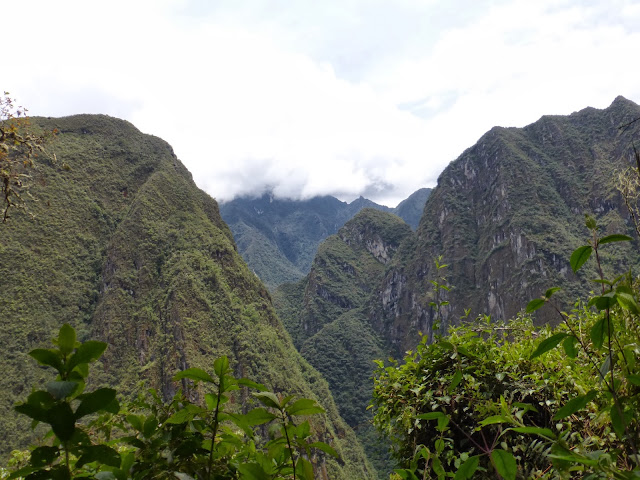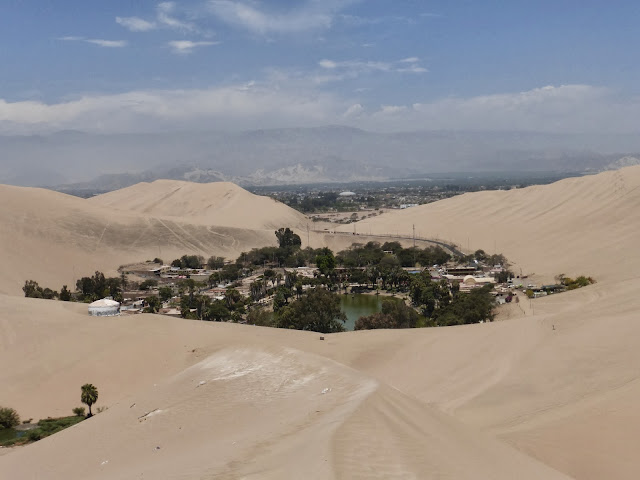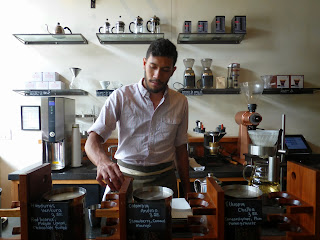 |
| Colourful houses in the center of Lima |
I had the amazing fortune of spending an entire month in Peru, traveling by bus through five cities: Lima, Huacachina, Ayacucho, Cusco, and Arequipa. Many who travel to Peru are convinced that Machu Picchu will be the highlight of their trip- and as magnificent as it was, it was definitely not my highlight. Peru's numerous and diverse landscapes, its food, and its people were, in my eyes, its most memorable aspects.
- Extraordinary Landscapes
 |
| The sand dunes in Huacachina, near Ica, are the most majestic landscape I have yet seen. |
Peru has everything: ocean, jungle, mountains, sand dunes. If you have the chance to go to Huacachina, get up very early in the morning to watch the sun rise over the dunes...at that moment, the only things moving are yourself and the clouds in the sky. What I couldn't help but think there and then is that if Nature is so beautiful and tranquil, it is so to inspire us to be the same, but as humans.
 |
| An oasis is situated at a 2km's descent into the Colca Canyon |
From Cabanaconday (160 km from Arequipa), one can hike down the Colca Canyon, which is the deepest in the world (twice as deep as the Grand Canyon) at 4000 m in depth. There is an oasis at the bottom where one can spend the night for 15 soles (about 5$), eat at one of the few restaurants, hang out in the hamacs, or swim in the pool. A tourist's paradise.
 |
| Palm trees and flowers abound in the oasis at the bottom of the Colca Canyon |
In Ayacucho (between Ica and Cusco), there is not a whole lot to do, but it is aesthetically pleasing, has many great restaurants (in particular the Via Via restaurant, where you can eat a truly delicious lunch for 9 soles, or about 3$), and is the subject of a very interesting history (it has been the center of bloody conflict between the Inca and the Huari; between the Spanish and the Inca; between Patriots and Loyalists; and finally, between the Sendero Luminoso marxist terrorists and government forces in the 1980s).
 |
| View of the cathedral and Plaza de Armas from the Via Via restaurant in Ayacucho |
As for Machu Picchu, yes it is absolutely worth it -it is hard to imagine that I had debated going or not. I tend to avoid very touristy places, and it could not be more so, but for good reason. I will spare you the pain of posting yet another picture of the Inca ruins, but I must share one of the hike in the jungle on the way to Machu Picchu, which I enjoyed as much as the abandoned city itself.
Exquisite food
The food in Peru is absolutely delicious. Among the typical meals one should try are: rocoto relleno (stuffed pepper with beef), caldo de gallina (chicken soup with egg and vegetables), pastel de papa (a sort of "cake" made of potatoes, cream and cheese), ceviche (raw fish with lime, olive oil, coriander, served with corn and sweet potato), cuy (fried guinea pig -actually quite savoury, and very nutritive), and lomo saltado (sautéed beef with onions and peppers). For drinks, try chicha de jora (a purple, corn-based beer), the famous pisco sour, and my favourite, emoliente: a warm drink served on the street, which contains a wide array of medicinal plants (toasted barley, flax seeds, plantain leaf, dried grass, etc.). I'm almost certain that the emoliente saved me from getting sick a few times.
 |
| Cuy (fried guinea pig) |
 |
| Ceviche |
 |
| A woman is preparing emoliente in Cabanaconday |
Golden People
I found Peruvians to be an extremely generous people, curious to learn about other cultures through their interactions with tourists, caring of their families, and very laid-back. The best way to meet those kind and inspiring people, in my opinion, is through couch surfing. I easily found a place to stay in Ayacucho, Cusco, and Arequipa, thanks to my beautiful hosts Juan, Hermogenes, and Anibal.
 |
| Ricardo and I, at the house of Hermogenes in Cusco |
Please allow me to share one of countless illustrations of their kindness. Not long ago, I took a two-day bus from the South of Peru to Buenos Aires. All I had for money was my debit card. We crossed the Chilean border without problem, but crossing the Argentinian border was a different story. I take the blame, I had not checked beforehand the requirements, and found out at the border control that Canadians had to pay a reciprocity fee of $75....which could only be paid online with a credit card. They would not accept cash or my debit card, so the bus driver so generously lent me his credit card. After two long hours (the Internet was not working for a while), I finally succeeded in paying the fee. The other passengers were so understanding, and barely complained about the extra two hours I added to their trip.
Petty theft
Petty theft
Though rumors abound of petty theft in Peru (and surely, it does occur -a few friends of mine did have some items stolen), I never got robbed. Keep your bag closed and close at hand, be aware of false bills, and nothing should happen to you.
 |
| I was unaware, at the time, that this taxi driver would steal a small amount from me. |
The only time I did get robbed was when I gave a 50 soles bill to the taxi driver to pay for a 5 soles ride, and he gave me back (supposedly) 45 soles in coins! Of course, I counted them later to find out there were only 35 soles. But hey, 10 soles ($4) is nothing.
Peru is an extraordinary country to visit. You will have a great trip there, regardless of whether you speak the language or not. But if you do speak Spanish, you will discover the most beautiful part of Peru: the generosity and warmheartedness of its people.








































